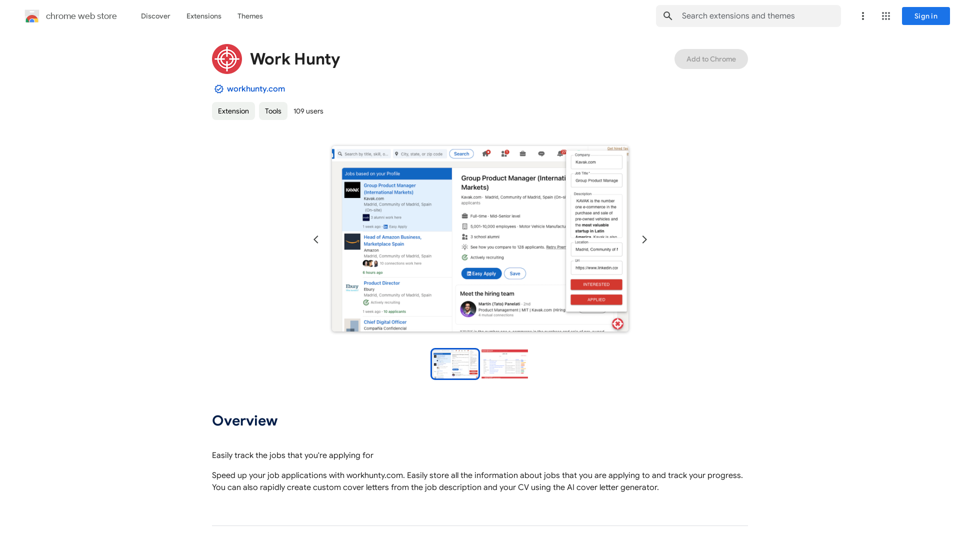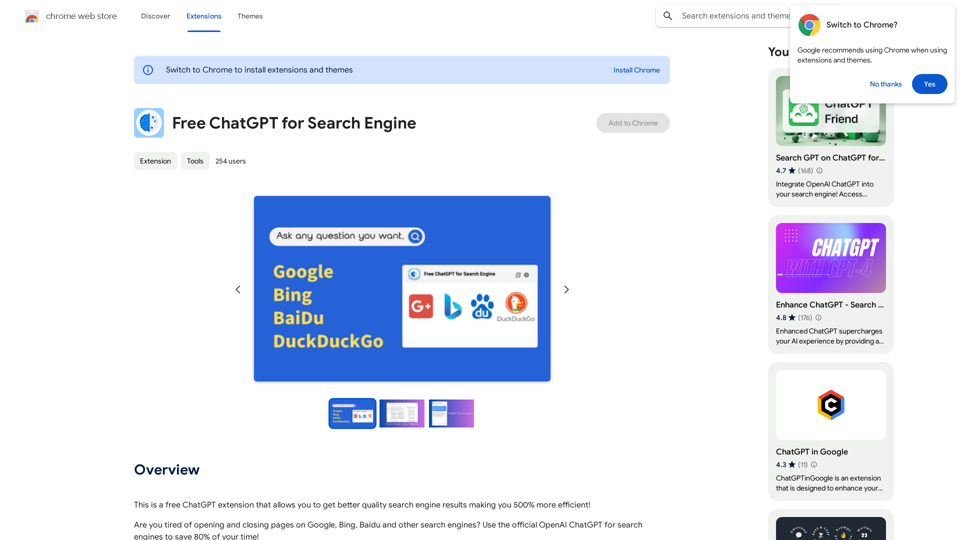Telepathic Demo Recordings is a Chrome extension designed to revolutionize sales demonstrations. It utilizes AI technology to create interactive, conversational demos that adapt to prospects' interests. This tool allows users to easily record product walkthroughs, capturing both screen activity and voice explanations to train an AI system that can then provide automated sales demos.
Telepathic Demo Recordings
Telepathic - Instantly help every prospect reach their "aha" moment with conversational product demos.
Provide an amazing buying…
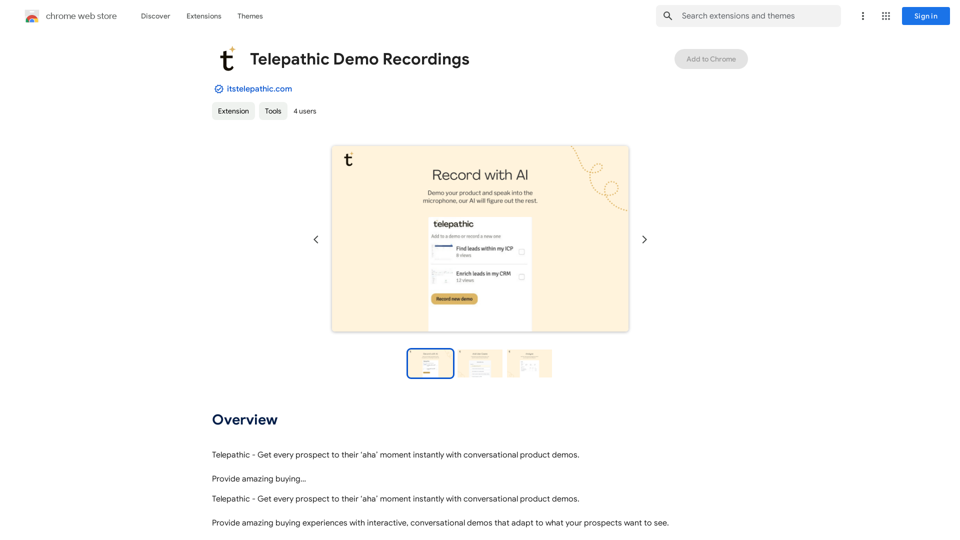
Introduction
Feature
AI-Powered Sales Demos
Telepathic Demo Recordings uses advanced AI to learn how your product works, enabling it to give sales demos on autopilot anytime, anywhere.
Easy Recording Process
Install the Chrome extension and start recording by clicking through your product while explaining its features into the microphone, just as you would to a prospect.
Screen and Voice Capture
The tool captures both your screen activity and voice explanations, using this data to train the AI on your product's functionality.
Interactive and Adaptive Demos
Generate amazing buying experiences with demos that adapt to what your prospects want to see, creating a personalized and engaging presentation.
Automated 24/7 Demos
Once trained, the AI can provide sales demos at any time, increasing your reach and efficiency in sales processes.
FAQ
What is Telepathic Demo Recordings?
Telepathic Demo Recordings is a Chrome extension created to provide interactive, AI-powered sales demos. It learns how your product works through user recordings and can then give automated demonstrations.
How do I use Telepathic Demo Recordings?
To use Telepathic Demo Recordings:
- Install the Chrome extension
- Start recording
- Click through your product
- Explain features by speaking into the microphone
- Let Telepathic capture screens and record your voice to train the AI
Does Telepathic Demo Recordings generate images or use GPTs?
No, Telepathic Demo Recordings does not have image generation capabilities or GPTs available. Its primary function is to create and deliver interactive product demos.
Is my information used for training data?
No, Telepathic Demo Recordings values user privacy. Your data is not used for any training purposes beyond teaching the AI about your specific product. You can delete your account at any time, which will remove all your data.
Latest Traffic Insights
Monthly Visits
193.90 M
Bounce Rate
56.27%
Pages Per Visit
2.71
Time on Site(s)
115.91
Global Rank
-
Country Rank
-
Recent Visits
Traffic Sources
- Social Media:0.48%
- Paid Referrals:0.55%
- Email:0.15%
- Referrals:12.81%
- Search Engines:16.21%
- Direct:69.81%
Related Websites
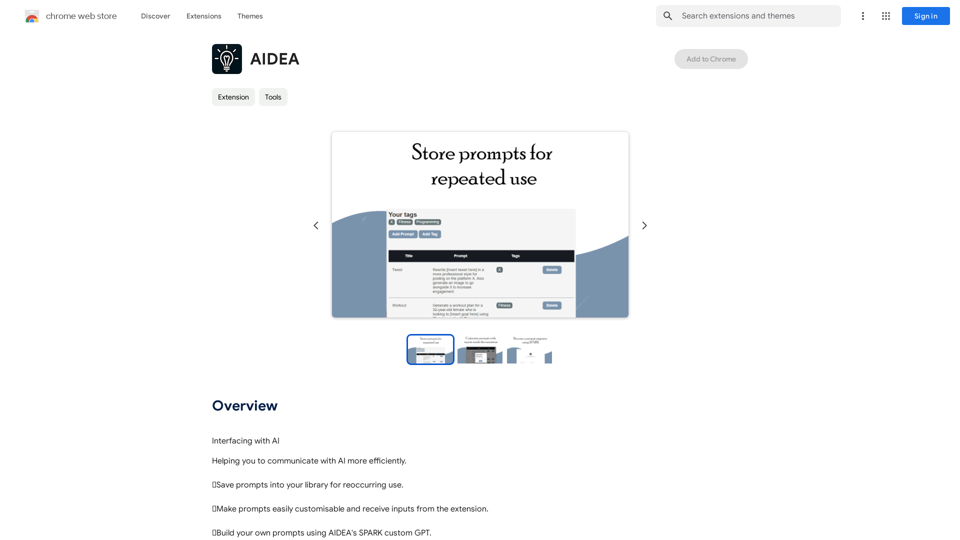
Interfacing with AI This document explores the various ways humans interact with artificial intelligence (AI). Types of Interfaces * Text-based Interfaces: These interfaces allow users to communicate with AI systems through written language. * Examples include chatbots, command-line interfaces, and search engines. * Voice-based Interfaces: Users interact with AI using spoken words. * Examples include virtual assistants like Siri, Alexa, and Google Assistant. * Graphical User Interfaces (GUIs): These interfaces use visual elements like icons, buttons, and menus to enable interaction with AI. * Examples include AI-powered image editing software and virtual reality experiences. * Gesture-based Interfaces: Users control AI systems through physical movements. * Examples include motion-controlled gaming and sign language recognition. Challenges of AI Interfacing * Natural Language Understanding (NLU): AI systems struggle to fully understand the nuances of human language. * Contextual Awareness: AI often lacks the ability to understand the broader context of a conversation or interaction. * Personalization: Creating AI interfaces that are tailored to individual user preferences and needs can be complex. * Ethical Considerations: * Bias in AI algorithms can lead to unfair or discriminatory outcomes. * Privacy concerns arise when AI systems collect and process personal data. Future of AI Interfacing * More Natural and Intuitive Interactions: Advancements in NLU and machine learning will lead to AI systems that can understand and respond to human input more naturally. * Multi-modal Interfaces: Future interfaces will likely combine multiple input methods (e.g., text, voice, gesture) for a richer and more immersive experience. * Personalized AI Assistants: AI assistants will become increasingly personalized, anticipating user needs and providing customized support. * Ethical AI Development: * Researchers and developers will continue to work on mitigating bias and ensuring responsible use of AI.
193.90 M
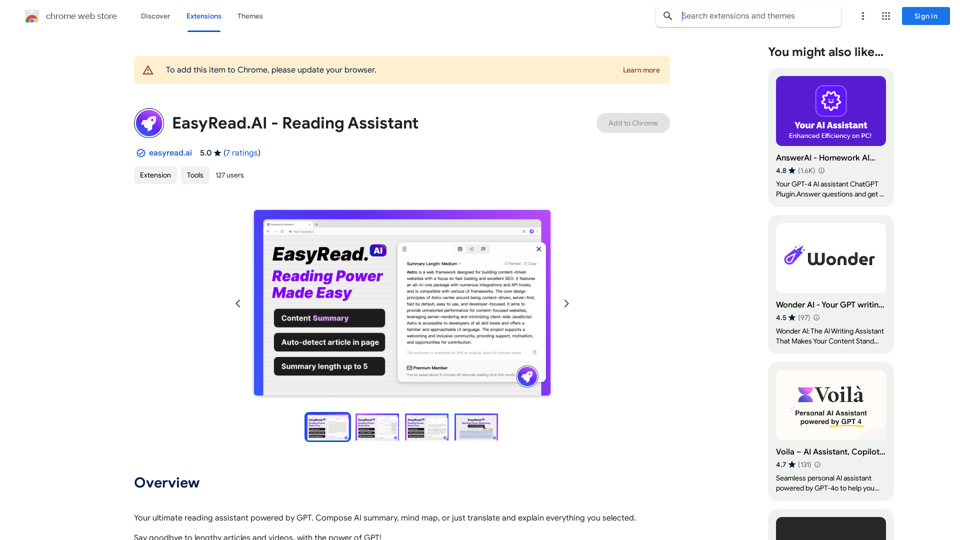
Your ultimate reading assistant powered by GPT. Compose AI summaries, mind maps, or just translate and explain everything you select.
193.90 M
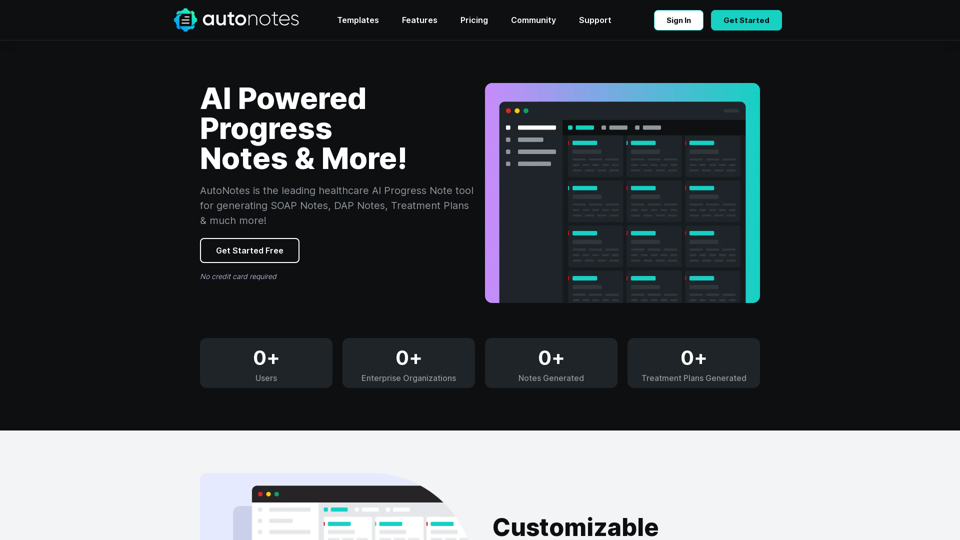
AutoNotes | AI Progress Notes, Assessments & More!
AutoNotes | AI Progress Notes, Assessments & More!AutoNotes is the top AI Progress Notes tool for Mental Health, Speech, and Occupational Therapy. Try AutoNotes for Free Now!
82.19 K
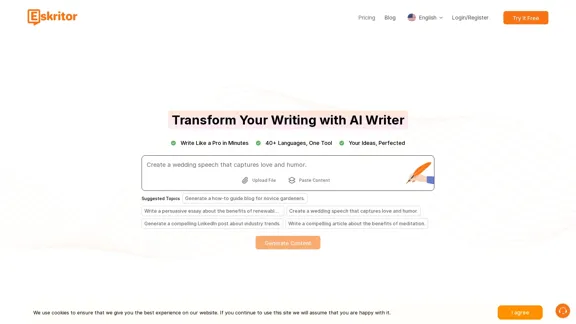
Eskritor AI Writer: Intelligent AI Content Creator
Eskritor AI Writer: Intelligent AI Content CreatorWrite 5x faster with Eskritor AI Writer's 20+ content tools. Start creating perfectly tailored content today - from articles to social posts. Try it free!
100.32 K
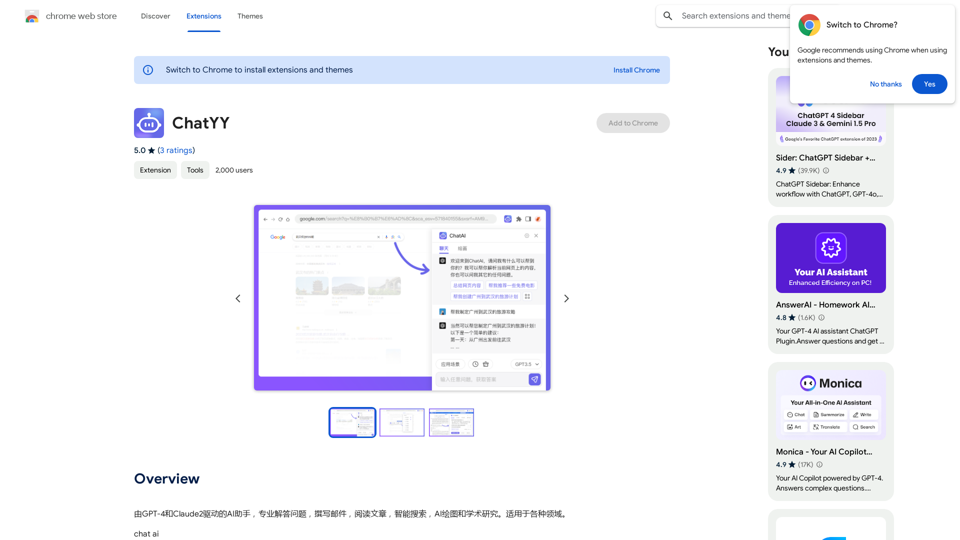
Driven by GPT-4 and Claude2, this AI assistant is capable of professionally answering questions, composing emails, reading articles, conducting intelligent searches, creating AI-generated graphics, and assisting with academic research. It is applicable to various fields.
193.90 M
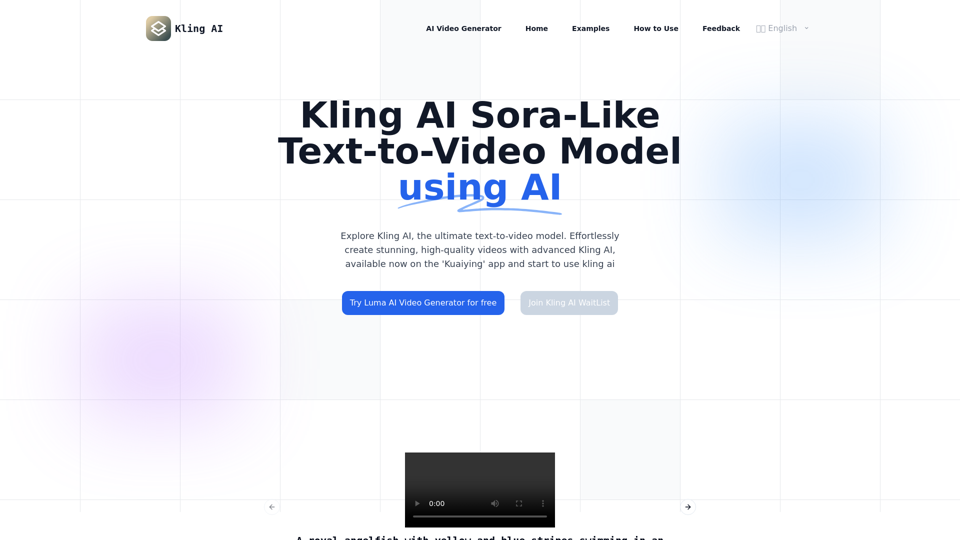
Kling AI | KuaiShou Text-to-Video Generation Model
Kling AI | KuaiShou Text-to-Video Generation ModelDiscover Kling AI, a revolutionary Sora-like text-to-video model. Create stunning videos with advanced 3D mechanisms and cinema-grade quality.
21.14 K
